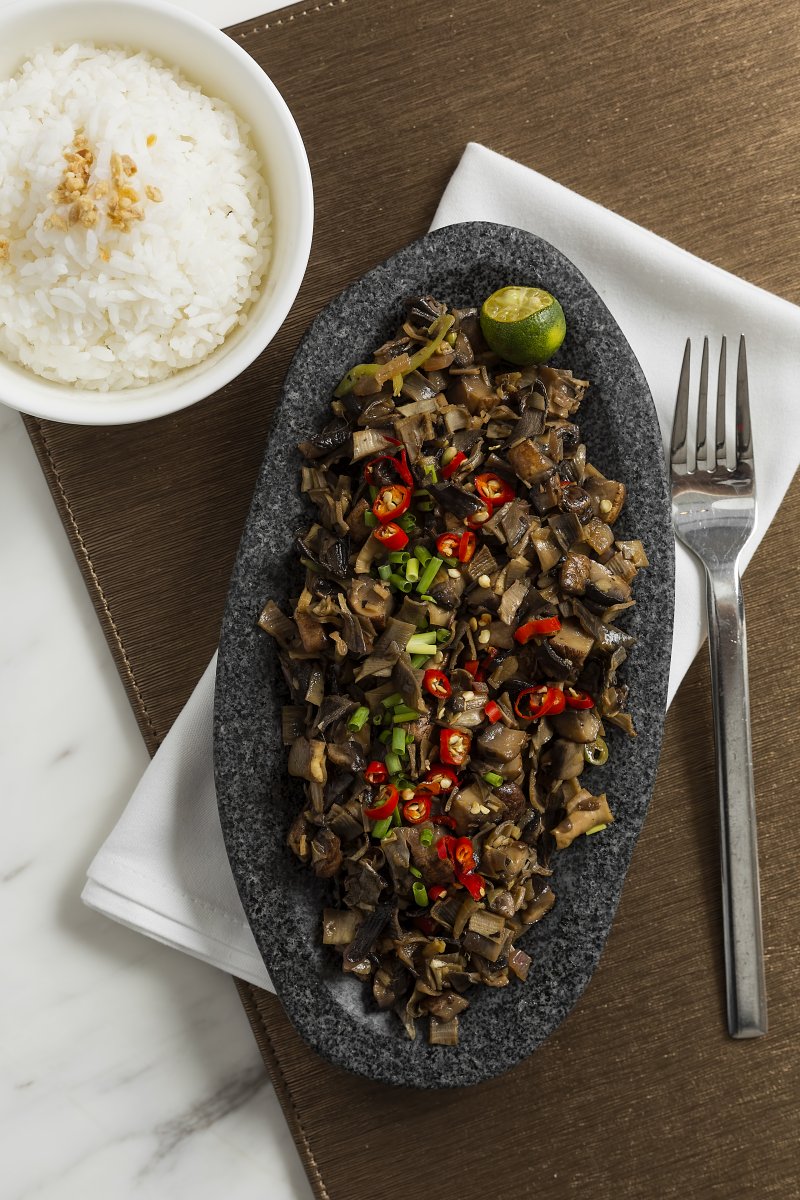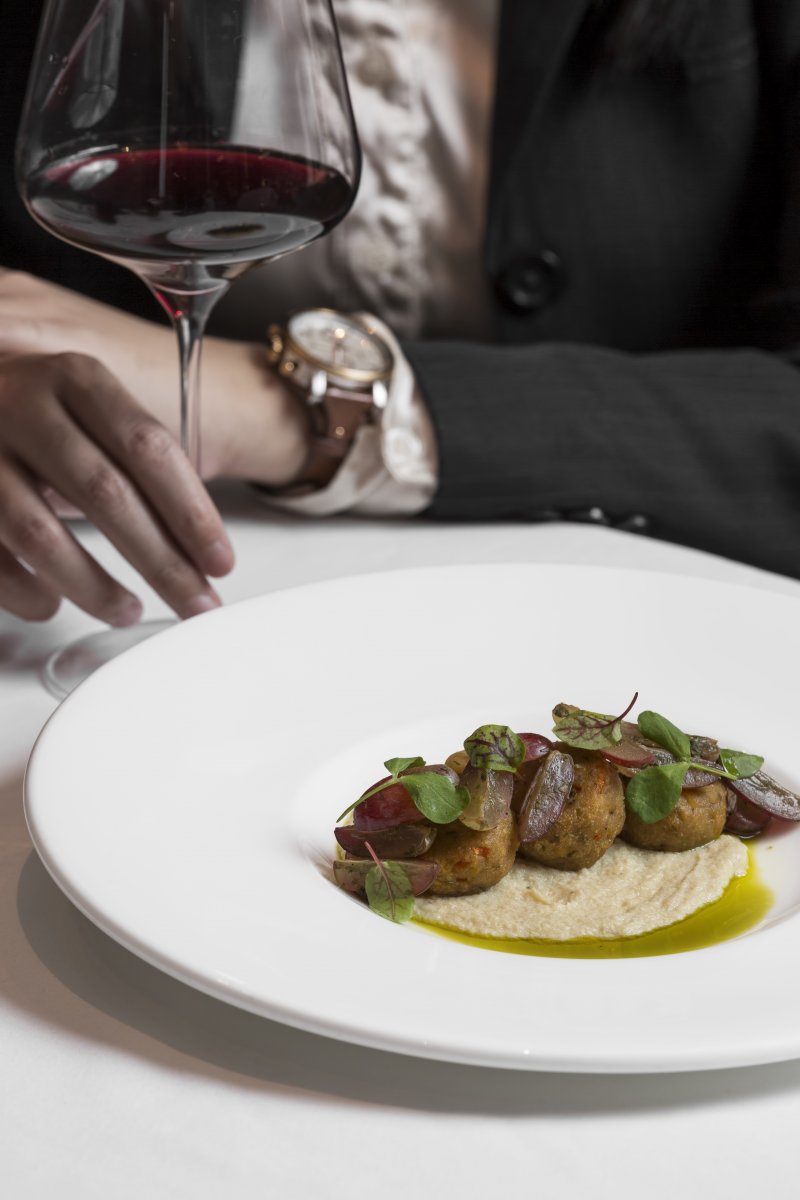The cartoon trope of a child whining about having to eat vegetables is well-known but unfair. It suggests that vegetables are inferior in flavor to meats and grains. As if a hierarchy of flavor condemned vegetables to a mundane caste. But a stereotype lingers: that those who mainly eat vegetables are either old or on a diet wishing they could enjoy more exciting dishes.
But for a number of people, what has been relegated as a bronze-medal ingredient is—in their eyes (and mouths)—worthy of gold. Vegetables should be valued not just for their nutritional content and health benefits but also for their appetizing textures and flavors. To do them justice, we must go beyond the use of vegetables as a meat substitute and celebrate them for what they are.
Prized produce
In New York, restaurants such as Chalk Point Kitchen on Broome Street puts the spotlight on vegetables. Vegan blogger Mango Manifesto was with me when I went to sample the restaurant’s large cauliflower steak, which has attracted many curious diners. The cauliflower was smoked to give it a woody aroma. It pairs well with the black garlic and blueberry barbecue sauce that has the right amount of heat. The steak is served alongside toasted farro with turmeric and an apple celery salad.

“It’s great because the cauliflower isn’t overcooked, which is what often happens when you try to do too much to a vegetable,” says Mango Manifesto. “The dish doesn’t try to imitate meat at all but really shows us how great vegetables can be.” There were two cauliflowers on the plate—one green and one white, which added to the presentation of the dish. It was far from boring—what with the medley of interesting flavors captivating the diner’s taste buds.
Vegetables should be valued not just for their nutritional content and health benefits but also for their appetizing textures and flavors. To do justice to them, we must go beyond the use of vegetables as a meat substitute and celebrate them for what they are
Chalk Point Kitchen chef Adam Maciejewski places great importance on his relationship with suppliers to fully understand local cuisine and appreciate the stories behind the food he creates. It’s what he calls “authentic hospitality, the kind that comes from the heart.” This philosophy is in line with the belief that half a dish is determined by the quality of its ingredients. Maciejewski’s experience working with delicate flavors allows him to bring out the best in vegetables, which are very sensitive to changes in taste and texture.
As for portions, there is nothing to worry about. “I love the idea of serving a large, roasted vegetable,” he says. “It’s substantial and overall satiating for our vegetarian and non-vegetarian diners. They like to see hearty portions that will fill them up without the guilty feeling of gorging yourself.”
Farm to fork

Manila is not far behind. The Marriott has already launched a vegan menu across its restaurants. F&B director Brendan Mahoney ties the growing popularity in veganism with the booming food and culinary scene in the country. While the vegan lifestyle has been there long ago, its expansion is linked to people being smarter and more conscious and aware of what they eat. “Vegans are ‘passionate eaters,’” Mahoney says. “Their commitment is out of personal advocacies such as environmental, animal welfare, and health. It’s beyond joining a popular bandwagon because it requires so much discipline.”
Executive chef Meik Brammer was proud to emphasize his team’s innovation in creating the vegan menu. It required a thorough familiarity of the ingredients they were working with. They took note of the quality profile, texture, and how these changed. “We use mushroom, tofu, chickpea, banana blossom, and more to replace the meat products,” explains Brammer who enjoys exploring local cuisines and cultures with their palates. He also shares how the Marriott sources many ingredients from an organic farm in Batangas.
In line with its advocacy, Marriott has also teamed up with Vegans of Manila, headed by Jaq Abergas who helps many aspiring vegans find the food they need for their new diet.
https://www.instagram.com/p/CKieUDvHMM-/
Filipino cuisine is often seen as meat-heavy but there are many ways to work around it. “I make delicious vegan food that won’t make you miss meat,” says Abergas. “I recreate my favorite omnivore food as delicious vegan food to win their hearts through their stomach.” She and her sister make vegan longganisa, which replaces meat with heart of palm. Figuring out what works best involves some experimenting with local fruits and vegetables similar to what Bremmer does. “I use a lot of eggplants, mushrooms, and tofu to replicate meat. Now, I’ve been experimenting a lot with langka and beans,” says Abergas.
Treating vegetables as the main dish is a paradigm shift in the diets of many Filipinos. The flawed belief that a meal is never complete without some kind of meat on the plate or that abstaining from eating meat would lead to nutritional deficiency is thankfully being laid to rest
Treating vegetables as the main dish is a paradigm shift in the diets of many Filipinos. The flawed belief that a meal is never complete without some kind of meat on the plate or that abstaining from eating meat would lead to nutritional deficiency is thankfully being laid to rest. Mahoney believes the mindset is changing through creativity—a novel dish with a familiar core. “We will be offering inasal, Bicol express, and sisig but with a vegan recipe so the flavors are familiar but with a twist.”
Abergas, on the other hand, tries to demonstrate that vegan products are affordable in order to incentivize the skeptics. “Not only do I need to make vegan food delicious, I also make sure it is cheap and affordable. It can be constant pressure to always make sure the meals I make are affordable and easy,” she explains.
There are many motivations for replacing meat in dishes. Environmentalists view the excessive consumption of meat as unsustainable and detrimental to the planet. For their part, health-conscious individuals emphasize the risk of excessive meat consumption with conditions like hypertension. Others view the slaughter of animals for food as unethical. What this demonstrates is the increasing consciousness of consumers when it comes to the providence of their food. Highlighting vegetables as a vital ingredient is a happy consequence of this rediscovery.
Originally published in F&B Report Vol. 14 No. 4













































